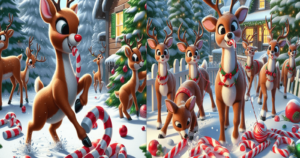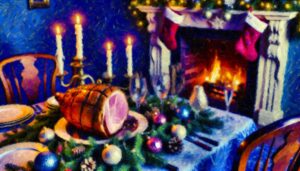Countries that celebrate Christmas in July primarily include those in the Southern Hemisphere, where July falls in the winter season. This allows them to experience a “winter” Christmas similar to the traditional December celebration in the Northern Hemisphere. Some countries that observe Christmas in July include:
- Australia: One of the most well-known countries for Christmas in July celebrations, with events and festivities in places like the Blue Mountains.
- New Zealand: Similar to Australia, with winter-themed events and Christmas markets.
- South Africa: Some regions, particularly those with colder climates, celebrate a winter Christmas in July.
- Brazil: While not widespread, some parts of Brazil have adopted the tradition, especially in areas with significant expatriate communities.
In addition to these Southern Hemisphere countries, some places in the Northern Hemisphere, like certain regions in the United States and parts of Europe, have also embraced the concept as a festive event, though it is more for novelty and commercial purposes rather than a traditional observance.
Australia Christmas in July

Christmas in July is a popular celebration in Australia, offering a mid-year festive experience that mirrors the traditional Christmas festivities in colder climates. Winter in Australia starts on June 1st and ends on August 31st. Here are some key aspects of the celebration.
Christmas in July is not an official holiday with a specific introduction date in Australia; rather, it evolved over time as a cultural practice. However, it is widely believed to have gained popularity in the mid-to-late 20th century. The concept was likely inspired by.
Winter Festivals in Australia
Emphasis on Cold-Weather Activities and Festive Markets:

- Snow-themed activities: Some regions, especially those in higher altitudes, experience cold weather and even snowfall, making it perfect for snowman building, sledding, and ice skating.
- Festive markets: Winter markets are set up, offering holiday-themed goods, crafts, and seasonal foods. These markets often feature live music, entertainment, and a festive atmosphere reminiscent of traditional European Christmas markets.
Nostalgia and Tradition:
- Many Australians have European ancestry, and Christmas in July allows them to reconnect with the winter Christmas traditions of their ancestors.
- It offers a chance to indulge in festive traditions like roasting chestnuts, making mulled wine, and enjoying a hot Christmas dinner, which are not as appealing during the heat of an Australian summer.
Top 3 Classic Dishes Enjoyed During Australia’s Christmas in July Celebrations
Roast Dinners, Puddings, and Hot Drinks:
- Roast dinners: A highlight of Christmas in July, featuring roasted meats like turkey, ham, and lamb, accompanied by roasted vegetables and rich gravies.
- Puddings: Traditional desserts such as Christmas pudding, fruit cake, and mince pies are popular. These are often served with custard, cream, or brandy butter.
- Hot drinks: Mulled wine, hot chocolate, and spiced cider are common beverages, providing warmth and a festive feel to the celebrations.
Unique Christmas Cultural Activities Across Australia
Carol Singing, Christmas-Themed Events, and Decorations:
- Carol singing: Communities often organize carol singing events, bringing people together to sing traditional Christmas carols and songs.
- Christmas-themed events: These can include themed parties, charity events, and community gatherings. Some places even set up “Santa’s Grotto” for children to visit Santa Claus.
- Decorations: Homes and venues are adorned with Christmas decorations such as fairy lights, tinsel, wreaths, and Christmas trees. Many people take the opportunity to fully decorate their homes, creating a cozy and festive atmosphere.
- Snowy Mountains: The Snowy Mountains in New South Wales host Christmas in July events, where you can enjoy snow, mulled wine, and hearty Christmas feasts.
- Candlelight Events: Australians gather in parks, beaches, and stadiums to sing Christmas carols by candlelight. These events are often televised, with the most famous being held in Melbourne’s Sidney Myer Music Bowl.
- Christmas Day at the beach: Due to the summer weather, many Australians spend Christmas Day at the beach. Bondi Beach in Sydney is particularly famous, attracting both locals and tourists for a festive day of sun, surf, and sand.
- Adelaide Christmas Pageant: The Adelaide Christmas Pageant is one of the largest in the world, featuring floats, clowns, bands, and Santa Claus. It’s a major event in South Australia, marking the official start of the festive season.
- Santa in Swimsuits: It’s common to see depictions of Santa Claus in Australian-themed attire, such as board shorts and sunglasses. Some events even feature Santa arriving on a surfboard or in a boat.
- Mangoes and Pavlova: Mangoes are in season during Christmas, and they are often a centerpiece in festive meals. Pavlova, a meringue-based dessert topped with fresh fruit, is also a popular Christmas dessert.
Christmas in July in Australia Experience
Christmas in July in Australia offers a unique blend of traditional Christmas cheer with a winter twist, providing an opportunity for people to experience the joy and warmth of the holiday season twice a year. The celebration is a testament to the Australian spirit of embracing fun and festivity, no matter the time of year.
New Zealand Christmas in July
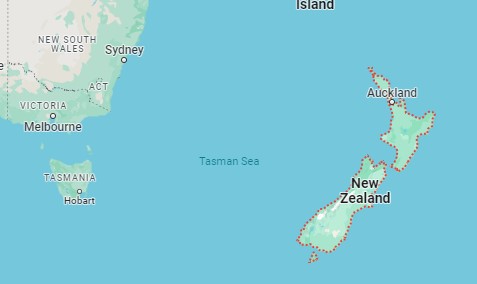
In New Zealand, Christmas in July is celebrated with winter-themed events and Christmas markets, much like in Australia. This mid-year festivity embraces the colder season, allowing people to enjoy a more traditional Christmas atmosphere, complete with winter decorations, festive foods, and activities such as:
1. Winter Wonderland Events: Many towns and cities host winter festivals, turning parks and public spaces into snowy wonderlands with ice skating rinks, snow machines, and winter-themed decorations.
2. Christmas Markets: Markets pop up with vendors selling Christmas crafts, decorations, gifts, and seasonal treats like mulled wine, hot chocolate, and roasted chestnuts.
3.Themed Dinners and Parties: Restaurants and hotels often offer special Christmas in July dinners, featuring traditional Christmas fare such as roast meats, puddings, and other festive dishes.
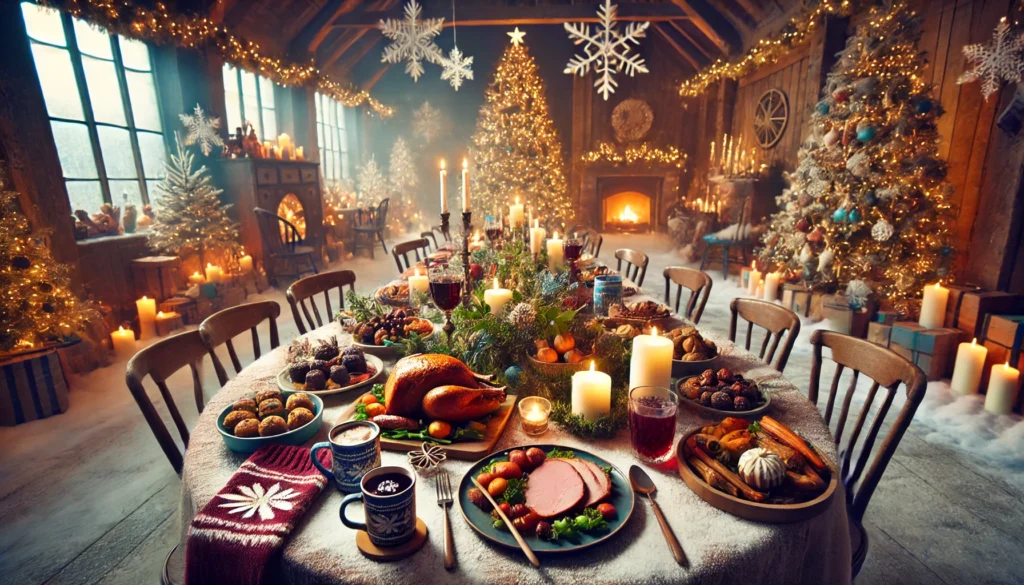
4. Holiday Concerts and Performances: Choirs, orchestras, and theater groups may put on special Christmas performances, including carol singing, plays, and other holiday-themed shows.
5. Family Activities: Families participate in crafting sessions, cookie decorating, and storytelling events centered around Christmas themes.
This celebration allows New Zealanders to experience the cozy, festive spirit of a winter Christmas, which contrasts with their traditional summer Christmas in December.
New Zealand’s Christmas in July celebration is unique due to several distinctive elements:
1. Southern Hemisphere Winter: Unlike the traditional December Christmas, which falls during the Southern Hemisphere summer, Christmas in July allows New Zealanders to experience a festive winter atmosphere. This aligns more closely with the classic Northern Hemisphere Christmas imagery of snow, warm fires, and hearty meals.
4. Scenic Winter Landscapes: New Zealand’s diverse and picturesque winter landscapes, including snowy mountains and serene lakes, provide a stunning backdrop for Christmas in July festivities. The natural beauty enhances the festive experience and sets it apart from celebrations elsewhere.
5. Maori and Kiwi Cultural Integration: Celebrations often incorporate elements of Maori culture and local traditions. This might include Maori performances, traditional hangi (earth oven) feasts, and crafts, blending indigenous culture with the Christmas spirit.
4. Winter Sports and Activities: The celebration often coincides with the ski season, making it possible to combine Christmas festivities with skiing, snowboarding, and other winter sports in renowned destinations like Queenstown and the Southern Alps.
5. Local Cuisine: Special winter-themed Christmas markets and dinners feature unique New Zealand produce and dishes. This includes specialties like roast lamb, kumara (sweet potato), pavlova topped with seasonal fruits, and traditional Kiwi desserts, offering a local twist on festive fare.

6. Community Spirit: Smaller towns and communities often come together to create intimate, community-focused events, fostering a strong sense of togetherness and local pride. This community-centric approach can be particularly heartwarming and distinctive.
7. Dual Celebration: Many New Zealanders enjoy celebrating both Christmas in July and the traditional December Christmas, giving them two opportunities each year to embrace festive traditions and enjoy time with family and friends.
These elements combine to create a uniquely New Zealand experience that blends traditional Christmas elements with local culture, scenery, and seasonal activities.
Differences between Christmas in July in New Zealand vs Australia:
| New Zealand | Australia |
|---|---|
| Scale of Celebrations: More low-key and localized | Scale of Celebrations: More widespread and commercialized |
| Cultural Influence: Varied influences, including Māori traditions | Cultural Influence: Strong British cultural heritage influence |
| Tourism: Less emphasis on tourism; some promotions in regions like Queenstown and Rotorua | Tourism:Actively promoted as a tourist attraction, especially in regions like the Blue Mountains and Tasmania |
| Unique Aspects: Incorporates local winter festivals and Māori traditions | Unique Aspects: “Yulefest” in places like the Blue Mountains, with themed dinners, performances, and Santa visits |
New zealand christmas Culture and Māori traditions
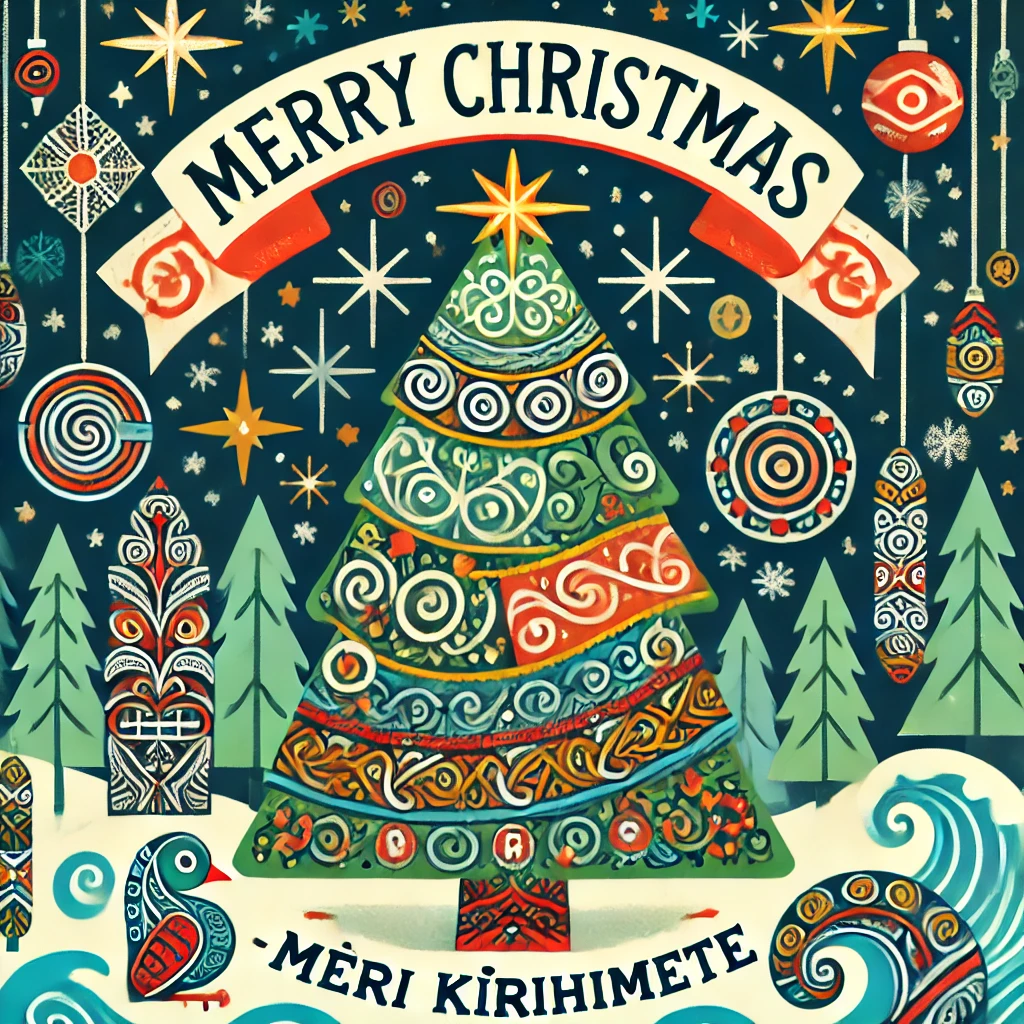
New Zealand’s Christmas celebrations, especially when intertwined with Māori traditions, reflect a unique blend of European and indigenous cultural practices.
While the mainstream Christmas festivities in New Zealand are similar to those in other Western countries, there is a growing recognition and incorporation of Māori traditions into the holiday season, especially during Christmas in July, which aligns with the Māori midwinter celebration of Matariki.
1. Matariki – The Māori New Year:
- Matariki is the Māori celebration of the New Year, which occurs during the winter months (around late June to July). It marks the rising of the Matariki star cluster (also known as the Pleiades) and is a time for reflection, remembrance, and looking forward. Matariki and Christmas in July often overlap, allowing for a blending of celebrations. Matariki involves feasting, gathering with whānau (family), storytelling, and honoring ancestors, which can complement the Christmas themes of family gatherings and festive meals.
2. Karakia and Blessings:
- During Christmas celebrations, Māori karakia (prayers or blessings) may be included to invoke spiritual guidance and protection. These are often recited before meals or at the beginning of Christmas events, grounding the festivities in Māori spiritual traditions.
3. Māori Art and Symbolism:
- Christmas decorations and gifts in New Zealand might include Māori art, such as carvings, woven items, and traditional patterns like koru (spiral) designs. These elements bring a distinct Māori flavor to the holiday season, emphasizing cultural pride and identity.
4. Whānau Focus:
- Māori traditions place a strong emphasis on whānau (extended family), which aligns with the Christmas focus on family gatherings. Christmas celebrations often extend beyond immediate family to include wider whānau, incorporating traditional Māori values of kinship and communal support.
5. Inclusion of Māori Language (Te Reo Māori):
- The Māori language is increasingly incorporated into Christmas celebrations, with greetings like “Meri Kirihimete” (Merry Christmas) being commonly used. Christmas carols and songs may be sung in Māori, and bilingual signage and messaging are often seen in public spaces during the holiday season.
6. Marae Celebrations:
- Some communities may hold Christmas celebrations on the marae (traditional Māori meeting grounds), where the focus is on communal feasting, sharing, and entertainment. This setting allows for a blending of Christian Christmas traditions with Māori cultural practices, creating a unique and inclusive celebration.
7. Environmental Stewardship – Kaitiakitanga:
- The concept of kaitiakitanga (guardianship of the environment) may also be reflected in how Christmas is celebrated, with an emphasis on sustainability, reducing waste, and respecting the land. This aligns with global trends toward eco-friendly holidays but is deeply rooted in Māori values.
8. Storytelling and Oral Traditions:
- Storytelling is a significant aspect of Māori culture, and during Christmas, there may be a focus on sharing Māori legends, history, and family stories. This practice enhances the sense of connection to ancestors and heritage, aligning with the reflective and family-oriented nature of the Christmas season.
By integrating these Māori traditions, New Zealand’s Christmas celebrations offer a rich, culturally inclusive experience that honors both the indigenous heritage of the Māori and the European customs brought by settlers. This blending of traditions fosters a unique national identity and deepens the cultural significance of the holiday season.
5 famous dishes serve in new zealand during july christmas celebrations
In New Zealand, celebrating Christmas in July has become popular, especially with winter-themed events that bring a festive atmosphere during the colder months. Here are five famous dishes often served during these July Christmas celebrations:
- Roast Lamb: New Zealand is known for its high-quality lamb, and a traditional roast lamb with garlic, rosemary, and mint sauce is a popular choice for Christmas in July. It’s typically served with roasted vegetables like potatoes, carrots, and parsnips.

2. Pavlova: This iconic New Zealand dessert is a must-have during any Christmas celebration, including in July. Pavlova is a meringue-based dessert that is crispy on the outside and soft on the inside, often topped with fresh whipped cream and seasonal fruits like kiwifruit, strawberries, and passionfruit.
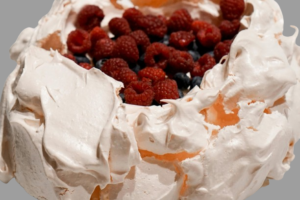
3. Stuffed Turkey or Chicken: A stuffed turkey or chicken, often roasted with a savory herb stuffing, is a centerpiece at many Christmas in July dinners. It’s accompanied by gravy and cranberry sauce, adding a festive touch.
4. Mince Pies: These small, sweet pies filled with spiced fruit mince are a traditional Christmas treat in New Zealand. They’re often served warm and dusted with powdered sugar, making them perfect for a winter celebration.
5. Plum Pudding with Brandy Sauce: A rich, dense dessert made with dried fruits, suet, and spices, plum pudding is a classic Christmas dish. It’s usually served with a warm brandy or custard sauce, adding to the cozy winter feel of the celebration.

South Africa Christmas in July

In South Africa, the concept of Christmas in July has become increasingly popular, especially in regions with colder climates. This celebration allows South Africans to experience a traditional, wintery Christmas atmosphere that contrasts with their usual summer Christmas in December.
Origins and Popularity of Christmas in July in South Africa
- European Influence: Much like in Australia, the idea of Christmas in July in South Africa is influenced by European traditions. Many South Africans with European heritage enjoy the nostalgic feeling of a winter Christmas.
- Marketing and Tourism: The tourism and hospitality industries promote Christmas in July events to boost business during the quieter winter months, attracting both locals and tourists.
Key Aspects of the Celebration
- Winter-Themed Activities:
- Snow Sports and Activities: In colder regions such as the Drakensberg and certain parts of the Western Cape, activities like snowboarding, skiing, and building snowmen are possible and highly enjoyed.
- Ice Skating Rinks: Temporary ice skating rinks are often set up in cities and towns, adding to the festive atmosphere.
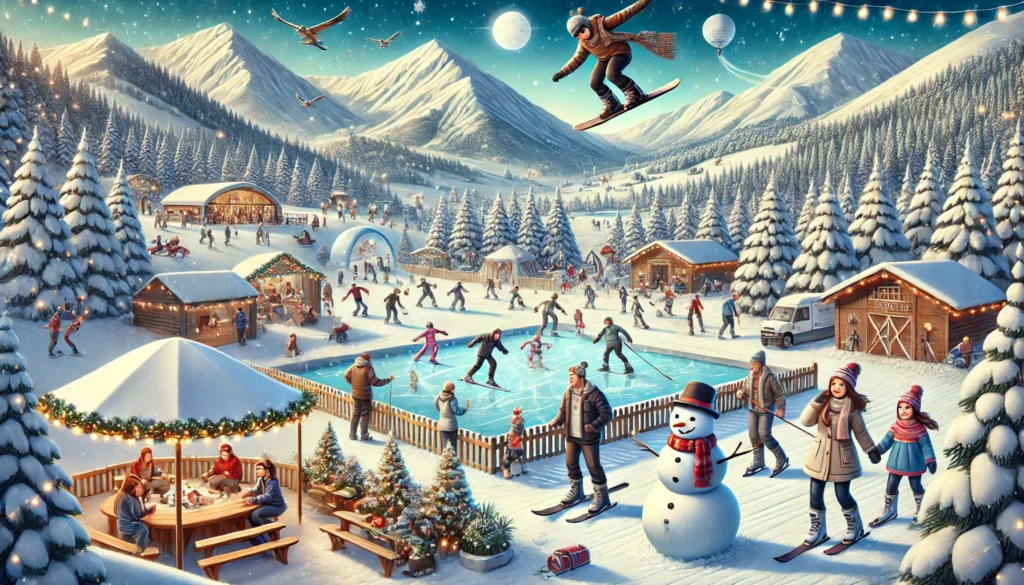
2. Festive Decorations:
- Winter Decorations: Homes, restaurants, and hotels are decorated with traditional winter Christmas elements, including snowflakes, Christmas trees with artificial snow, and cozy indoor setups.
- Christmas Lights and Displays: Many places put up elaborate light displays and decorations, creating a festive winter wonderland.
- Food and Beverages:
- Traditional Meals: The menu typically includes hearty winter dishes such as Biltong soup, roast turkey, glazed ham, roasted vegetables, and rich desserts like Christmas pudding and mince pies.
- Hot Beverages: Mulled wine, hot chocolate, and other warm drinks are popular, offering a cozy contrast to the winter chill.
- Events and Gatherings:
- Themed Parties: Many people host Christmas in July parties, complete with festive music, gift exchanges, and holiday games.
- Community Events: Public events such as winter festivals, markets, and charity functions are common, bringing communities together in the festive spirit.
- Tourism and Travel:
- Popular Destinations: Regions like the Drakensberg, where snowfall can occur, become prime destinations for those seeking a winter Christmas experience. Resorts and lodges often offer special Christmas in July packages.
- City Celebrations: Major cities like Cape Town, Johannesburg, and Durban also embrace the celebration with events, markets, and themed activities.
- Cultural Significance:
- Inclusive Celebrations: Christmas in July is celebrated by a diverse range of people in South Africa, allowing for an inclusive and multicultural festive experience.
- Connection to Heritage: For many, the celebration is a way to connect with their European heritage and enjoy the traditional aspects of Christmas that are less practical during the Southern Hemisphere’s summer.
By understanding the unique aspects of Christmas in July in South Africa, one can appreciate how this celebration brings the warmth and joy of Christmas to the colder winter months, offering a delightful contrast to the traditional summer festivities in December.
Brazil Christmas in July

While not as widespread as in some other countries, the tradition of celebrating Christmas in July has been adopted in certain parts of Brazil, particularly in areas with significant expatriate communities and among those who appreciate the cultural novelty. This mid-year celebration offers a chance to experience the festive spirit in a cooler climate, contrasting with the tropical summer Christmas in December.
Origins and Popularity of christmas in July in Brazil
- Expatriate Influence: The tradition has been introduced and popularized by expatriate communities, especially those from countries where Christmas in July is a familiar concept, such as Australia and South Africa.
- Cultural Curiosity: Brazilians enjoy festivities and are open to embracing new cultural traditions. Christmas in July provides a unique opportunity for celebration and enjoyment during the winter months.
Key Aspects of the Celebration in Brazil in July
- Winter-Themed Activities:
- Indoor Gatherings: Families and friends gather indoors to celebrate, taking advantage of the cooler weather. Cozy settings with fireplaces or heaters are popular.
- Outdoor Activities: In southern regions like Rio Grande do Sul, where winters can be quite cold, outdoor activities such as bonfires, marshmallow roasting, and winter sports are enjoyed.
- Festive Decorations:
- Winter Decorations: Homes, restaurants, and event venues are decorated with traditional winter Christmas elements, including snowflakes, artificial snow, Christmas trees, and warm lighting.
- Holiday Ambiance: The ambiance is enhanced with festive music, twinkling lights, and holiday scents like cinnamon and pine.
- Food and Beverages:
- Traditional Meals: The menu often features hearty, warm dishes similar to those enjoyed during Christmas in colder climates. Roasted meats, casseroles, and rich desserts like panettone and pudim de leite (milk pudding) are popular.
- Hot Beverages: Hot chocolate, mulled wine, and spiced teas are served to keep everyone warm and cozy.
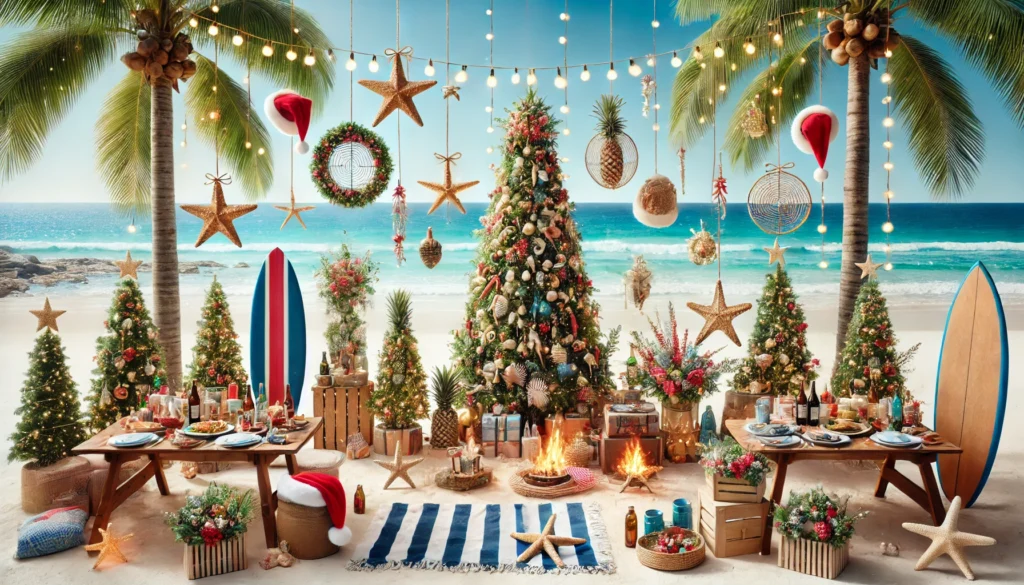
3. Events and Gatherings:
- Themed Parties: Christmas in July parties are organized, complete with gift exchanges, holiday games, and festive decorations.
- Community Events: Expat communities, social clubs, and organizations host events such as Christmas markets, winter festivals, and charity drives, bringing people together in the festive spirit.
4. Tourism and Travel:
- Popular Destinations: In regions known for colder weather during July, such as the southern states of Brazil, hotels and resorts offer special Christmas in July packages, attracting tourists looking for a winter Christmas experience.
- City Celebrations: Major cities like São Paulo and Rio de Janeiro also see localized celebrations, with restaurants and bars hosting themed events and dinners.
5. Cultural Significance:
- Expatriate Communities: For expatriates, Christmas in July provides a comforting reminder of home and a chance to celebrate familiar traditions in a new setting.
- Local Enjoyment: For locals, it’s an opportunity to experience a different kind of festive celebration, adding diversity and fun to the Brazilian calendar.
By embracing Christmas in July, certain parts of Brazil, particularly those with significant expatriate communities, add a unique and enjoyable twist to their festive celebrations. This tradition allows for a dual experience of Christmas—one in the warmth of summer and another in the cooler, cozy winter months.
Comparison of Christmas in July to December Christmas
- Weather and Atmosphere:
- July: Cold, often snowy or rainy weather, perfect for indoor, cozy celebrations.
- December: Hot summer weather, leading to outdoor activities like beach outings and barbecues.
- Decorations and Food:
- July: Winter decorations and hearty, warm meals.
- December: Lighter decorations suited for summer and foods like cold meats, salads, and fresh fruits.
- Activities:
- July: Winter sports and cozy indoor gatherings.
- December: Outdoor festivities, swimming, and summer sports.
By understanding the unique aspects of Christmas in July in these countries , one can appreciate how this celebration brings the warmth and joy of Christmas to the colder winter months, offering a delightful contrast to the traditional summer festivities in December.
Questions people ask about countries that celebrate Christmas in July, and answers:
Here are some common questions people ask about countries that celebrate Christmas in July, along with the answers:
1. Why do some countries celebrate Christmas in July?
- Answer: Countries in the Southern Hemisphere, such as Australia, New Zealand, and South Africa, experience winter in July. Celebrating Christmas in July allows them to enjoy the festive atmosphere with traditional winter activities and foods, which align better with the colder weather. It’s a fun way to experience a “winter” Christmas similar to the Northern Hemisphere’s December festivities.
2. Which countries celebrate Christmas in July?
- Answer: Countries that commonly celebrate Christmas in July include Australia, New Zealand, and South Africa. Some regions in the United States and parts of Europe also have Christmas in July events, but it is more of a novelty rather than a traditional celebration.
3. How is Christmas in July celebrated in Australia?
- Answer: In Australia, Christmas in July is celebrated with winter-themed activities such as skiing and snowboarding in the mountainous regions. People often decorate their homes with Christmas lights, enjoy festive meals like roast dinners and puddings, and participate in Christmas markets and winter festivals.
4. What are some typical activities during Christmas in July in New Zealand?
- Answer: In New Zealand, Christmas in July includes activities like skiing, snowboarding, and building snowmen in areas with snow. Cities and towns may set up temporary ice skating rinks, and people enjoy traditional Christmas meals. Christmas markets and festive events also add to the winter holiday spirit.
5. Is Christmas in July a public holiday?
- Answer: No, Christmas in July is not a public holiday. It is an unofficial celebration that people participate in for fun. It’s an opportunity to enjoy Christmas festivities during the colder months in the Southern Hemisphere.
6. Do people exchange gifts during Christmas in July?
- Answer: Gift-giving is not as common during Christmas in July as it is during the traditional December Christmas. However, some people may choose to exchange small gifts or organize secret Santa events as part of their celebrations.
7. What foods are typically enjoyed during Christmas in July?
- Answer: Traditional Christmas foods such as roast meats, vegetables, Christmas pudding, and mulled wine are commonly enjoyed during Christmas in July. The colder weather makes it more suitable to indulge in hearty, festive meals.
8. Are there any specific decorations for Christmas in July?
- Answer: Decorations for Christmas in July are similar to those used during the traditional Christmas season, including Christmas trees, lights, wreaths, and ornaments. However, some decorations may be adapted to fit a winter theme, such as snowflakes and snowmen.
9. How did Christmas in July originate?
- Answer: The concept of Christmas in July is believed to have originated in the 1930s at a summer camp in North Carolina, USA. It was later popularized by merchants and marketers as a way to boost sales during the mid-year slump. In the Southern Hemisphere, it became a way to celebrate Christmas during the colder winter months.
10. Is Christmas in July celebrated in other countries outside the Southern Hemisphere?
- Answer: Yes, Christmas in July is also celebrated in some parts of the United States, Canada, and European countries, mainly as a novelty event. These celebrations often include themed parties, festive decorations, and activities that mimic the traditional December Christmas, but it is not a widespread tradition.





